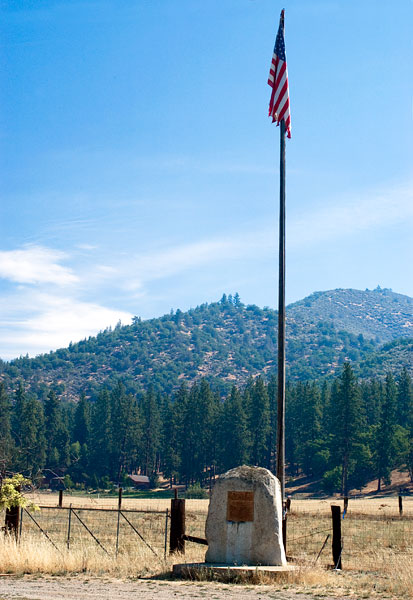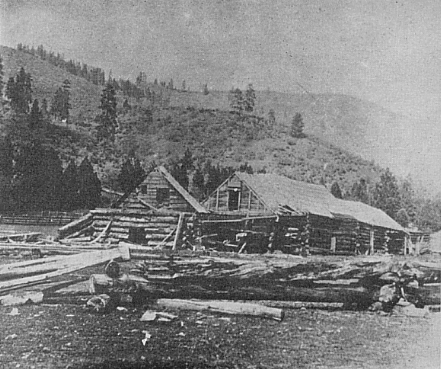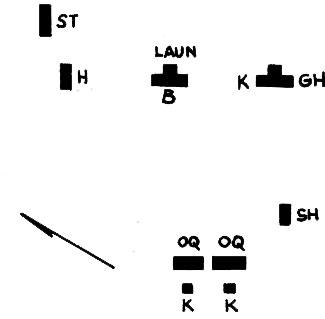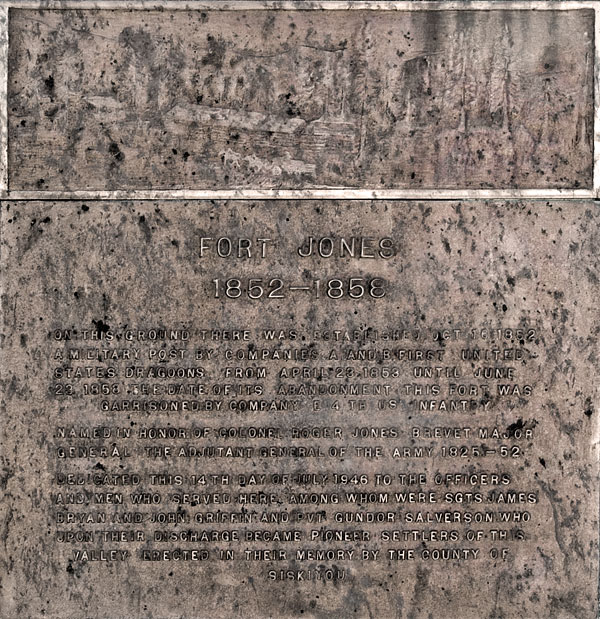

The answer was a merger of the funds and talents of Crook, a versatile hunter; Second Lieutenant John B. Hood, an experienced farmer; Assistant Surgeon Francis Sorrel, a businessman; and First Lieutenant John C. Bonnycastle.
Their "plan to get along in this country of gold and extravagance" was described by Hood in his autobiographical Advance and Retreat. The future Confederate general described how the four organized their own mess and "as we were fond of hunting and game was plentiful [we were able] to supply our own table with every variety thereof and to send the surplus to market for sale. This financial plan worked admirably."
Crook's Autobiography goes into greater detail, noting, "I did most of hunting. At the end of the month the mess was able to declare dividends. For over a year we never had any meat on our table except game."
Sorrel arranged for the sale of game in Yreka, 16 miles from Fort Jones, and the revenue helped the partnership to meet their other bills. This was particularly helpful when they found that they could buy ammunition cheaper on the civilian market in San Francisco than through the quartermaster, who had to assess a transportation cost to the basic price.
Hood did some of the hunting, Crook noted, but was a greater asset when "we engaged in ranching together."
"Crook and I were led to secure land and sow large crop of wheat," Hood wrote. As far as he was concerned, the project was successful even though he was transferred before harvest time. "If my memory betray me not," Hood added, "I received a draft for about one thousand dollars in gold, as my share of the profit in the wheat crop."
Crook had a different opinion of the farm experiment. Although Hood "sold out on leaving in the spring, and made money," Crook commented, "I held on and lost money."
Farming and hunting were not the main reasons that the two young officers were at Ft. Jones, but these supplied their means of livelihood there. Described by Crook as "a few log buts built on the two pieces of a passage plan," Fort Jones was established in October 1852, a year before Crook's arrival.
Jones was Crook's first frontier fort. Having been filled with tales of Indian fighting and wild animals, the new officer "was prepared to believe many of these stories of bear coming into camp, chewing people, pulling off their blankets when they were asleep . . . the treachery and cruelty of the Indians . . . I was constantly on the 'que vive' to meet some of these many adventures."
Crook wrote that his first quarters were "one of the pens that was not yet finished. There were neither latches nor fastening of any kind on my door." He quickly corrected this after being awakened one night by a "visiting bear"-that turned out to be the poses mascot Newfoundland dog and another night by a "stalking Indian."
"The sensation of my scalp leaving my bead" was revealed by candlelight to be an equally disconcerted owl that "in its fright lit on my bead," Crook found. "His needle-like claws produced the pain in my scalp, as my hair was cut close, and there was no protection."
These imaginary threats to Crook's well being soon were replaced by the actual problem of Indian fighting. He found that this was complicated by his senior officer's love of strong drink, both in garrison and while on patrol.
A two-company post when Crook arrived, Fort Jones soon was reduced to a single company of 30 men, Captain Henry M. Judah's Company E, 4th Infantry, "better known as 'The Forty Thieves'," according to Crook. This officer was a West Point classmate of U. S. Grant and served as a brigadier general in the Civil War, but Judah's combat abilities left Crook unimpressed.
When the command took to the field in January 1854, leaving a detachment under a noncommissioned officer in command of Fort Jones, Crook led the advance guard. Judah remained with a rear guard, composed mainly of volunteers from Yreka. Crook soon discovered that the volunteers were well fortified with "courage."
"It seemed that the rear guard had gotten some whiskey, and were all drunk, and scattered for at least 10 miles back," he wrote. "Judah was so drunk that be bad to be lifted from his horse" when the rear guard straggled into camp. The next day he was sick all day with the delirium tremens."
Indians were found holed up in a barricaded cave near where they had killed a party of white men. Judah's plan to charge the cave, with Crook and Bonnycastle in the lead, was countermanded by the arrival of a company from Fort Lane, Oregon. Captain-later Major General-Andrew J. Smith took charge, learned in a parley with the Indians that they had killed in self defense, and permitted them to escape.
Crook said, "Our part of the grand farce returned to our place of abode" where there was talk of preferring charges against Judah. The matter was dropped when Judah promised to arrange a transfer.
TO GET THERE: Town of Fort Jones is in Scott Valley, California, 16 miles west of Yreka (described by Crook as "a large ant's nest" in 1854 where "miner, merchant, gambler, and all . . . carried their lives in their own hands . . . scarcely a week passed by without one or more persons being killed"). From center of town of Fort Jones go south on State 3 to East Side Road; site of fort is a half-mile south of town, left side of East Side Road.


"On the edge of a beautiful mountain valley called Scott's Valley, with a beautiful river of the same name running through it," Fort Jones favorably impressed George Crook when he arrived in 1853. Two companies of 2d Infantry were present then, each led by unusual officers. In command was Brevet Major George F. Patten, known familiarly as "He! He! be God! Patten" because of speech mannerism, who lost most of left hand in Mexican War. Captain Bradford R. Alden, company commander, had been Crook's Commandant of Cadets at West Point. When he left East, Alden gave letter of resignation to wife which she submitted to War Department as soon as she heard he had been wounded at Fort Jones. He was shocked but unable to reverse decision upon receiving notification that he had "been resigned." Flagpole (left) marks site on which collapsed building (right) was landmark for years after fort's abandonment.

| B | Barracks |
| GH | Guardhouse |
| H | Hospital |
| K | Kitchen |
| LAUN | Laundry or Laundress Quarters |
| OQ | Officers' Quarters |
| SH | Storehouse |
| ST | Stable |
Fort Jones looked like this when visited by Inspector General Mansfield in 1854. He reported that all buildings "were of logs, and erected by the men. Of course quite indifferent, but such as other people enjoy and sufficient for the present." Company E, 4th Infantry Regiment, garrisoned post under Lieutenant Bonneycastle; Captain U.S. Grant would have been commander but he resigned before joining company. Mansfield commented that troops "gave a handsome drill at infantry, but the drill as skirmishers was indifferent." (Redrawn from Mansfield Report, 1854.)

|
Chronology on the Fort Jones marker does not mention short period in early 1864 when Company I, 1st Battalion of Moutaineers, California Volunteers, was organized from the local area to fight hostile Indians south of Scott Valley.
This page was reprinted with permission from Pioneer Forts of the Far West, published in 1965
Such military posts were to be established in the vicinity of major stage routes, which would have meant locating the post in the vicinity of Yreka, sixteen miles to the Northeast. The areas around Yreka did not contain sufficient resources, including forage for their animals, so Capt. Fitzgerald located his troop some sixteen miles to the southwest, in what was then known as Beaver Valley. Fort Jones would continue to serve Siskiyou County's military needs until the order was received to evacuate some six years later on June 23, 1858.
Among the officers stationed at Fort Jones who would attain national prominence in ensuing years were Phil Sheridan (Union Army); William Wing Loring (Confederate); John B. Hood (Confederate); George Crook (Union), who would become one of the greatest leaders of the Grand Army of the Republic less than a decade later; and George Pickett (Confederate). Ulysses S. Grant later a (Union) commander was ordered to Fort Jones, but was Absent Without Leave for whatever his tenure would have been.
Source: Wikipedia. Accessed 20 February 2015
Addition Online Histories